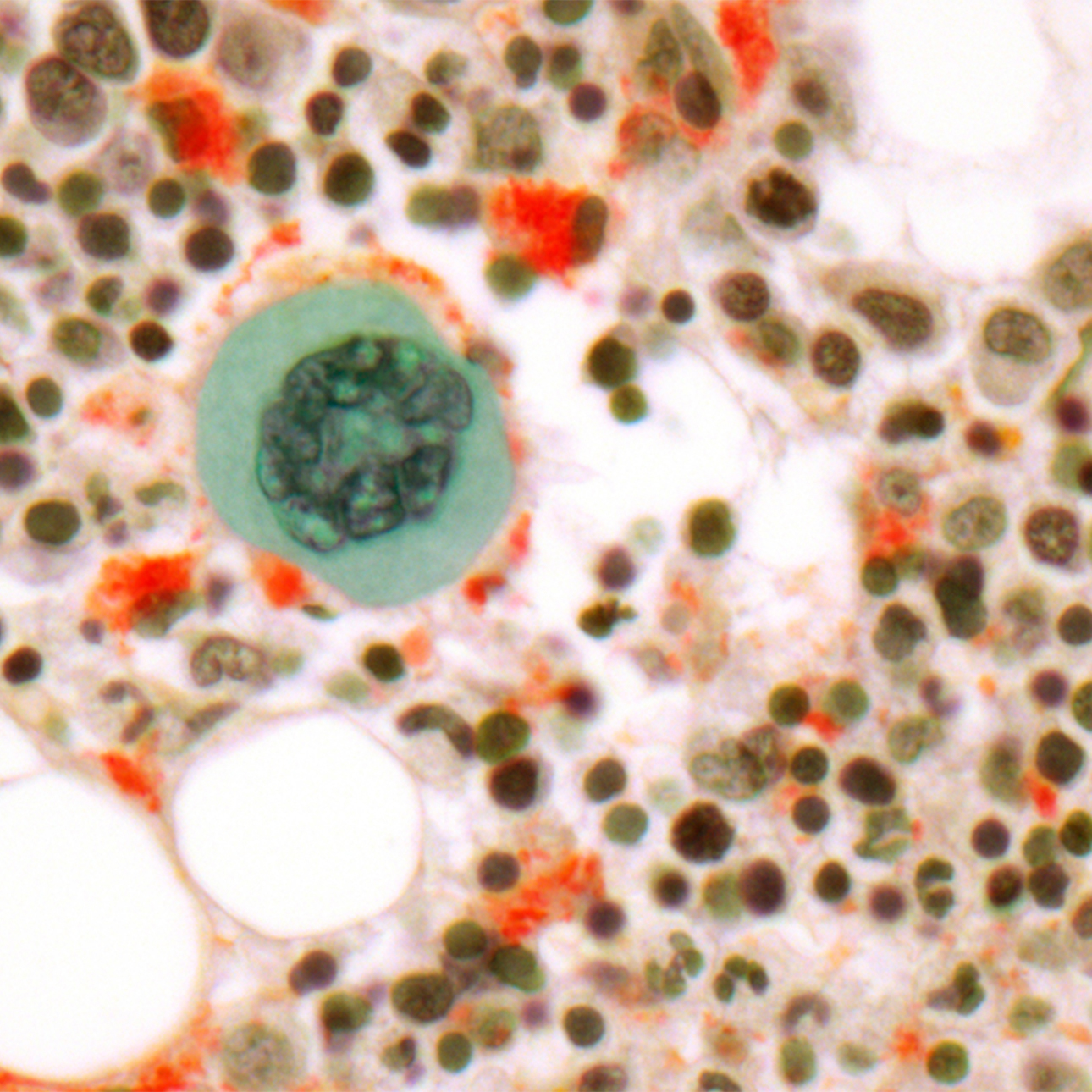
Multiple Myeloma
Treatments
Multiple myeloma is very hard to cure, although allogeneic stem cell transplantation has cured patients with the disease. Unfortunately, however, allogeneic transplantation can only be used in a minority of patients with myeloma due to donor availability and age limitations. The good news, though, is that many current treatments extend overall survival and improve the quality of a patient's life by controlling the symptoms and complications of the disease.
Patients with multiple myeloma who do not experience symptoms may not require treatment. For these patients, the risks and side effects of treatment are likely to outweigh the possible benefits. However, these patients should be watched closely and should begin therapy when symptoms appear.
Patients who require treatment for multiple myeloma usually receive chemotherapy, radiation therapy, stem cell transplantation and/or thalidomide. New drugs used to treat multiple myeloma include Velcade, which has recently been approved for use by the U.S Food and Drug Administration (FDA). Another novel therapy, called Revimid, is currently in the last phase of clinical trials.
There also are a number of other clinical trials available for patients with newly diagnosed myeloma, relapse myeloma or progressive myeloma.
Chemotherapy
Chemotherapy is one of the main treatments for multiple myeloma. Doctors may prescribe two or more chemotherapy drugs that work together to kill myeloma cells. These drugs are either taken by mouth or injected into a blood vessel and travel through the bloodstream, reaching myeloma cells all over the body. For this reason, chemotherapy is called systematic therapy.
The most common initial drug regimen is called VAD, which stands for the treatments vincristine, adriamycin and dexamethasone.
Radiation Therapy
Radiation therapy uses high energy X-rays to damage cancer cells and stop them from growing. In this form of treatment, a large machine aims the rays at a tumor and the surrounding area. Treatment with radiation is called local therapy, meaning that it affects only the cells in the treated area.
People who have multiple myeloma sometimes receive radiation therapy in addition to chemotherapy. The purpose of the radiation therapy is to help control the growth of tumors in the bones and relieve pain that these tumors cause. Treatment usually lasts for one to two weeks.
Stem Cell Transplantation
Stem cell transplantation, performed as support for high-dose chemotherapy, is a treatment option for many patients with myeloma. Stem cells that are obtained from the patient's own body are called "autologous" stem cells. Studies have shown that this treatment is more beneficial than conventional chemotherapy. Autologous stem cell transplantation is considered standard treatment for those with newly diagnosed myeloma.
Stem cell transplantation is used in conjunction with high-dose chemotherapy, which is more effective than conventional chemotherapy in destroying myeloma cells. Because high-dose chemotherapy also destroys normal blood-producing stem cells in the bone marrow, these cells must be replaced in order to restore blood cell production.
Thalidomide
Originally developed as a treatment for insomnia and morning sickness in the 1950s, thalidomide is an oral drug that has been shown to be highly active against myeloma. In addition to myeloma, thalidomide is being evaluated in clinical trials as a treatment for a variety of solid tumors and blood cancers.
Velcade
Velcade belongs to a class of anticancer drugs called proteasome inhibitors. The FDA has approved it for patients whose myeloma has returned after treatment as well as newly-diagnosed patients. Velcade causes myeloma cells to die by blocking the cells' ability to eliminate its waste products, thereby overwhelming the "garbage" system of the cell.
UCSF Health medical specialists have reviewed this information. It is for educational purposes only and is not intended to replace the advice of your doctor or other health care provider. We encourage you to discuss any questions or concerns you may have with your provider.
Treatments we specialize in
-

Allogeneic Transplant
In a procedure similar to a simple blood transfusion, the patient receives bone marrow or stem cells from a tissue-matched donor.
Learn more -

Autologous Transplant
Stem cells collected from the blood before chemotherapy or radiation are returned to the patient's body using a process similar to a blood transfusion.
Learn more





















